Do you love beaches, with a little history? One of the best places to take such a holiday is the Algarve, on the southern coast of Portugal. Visit Europe’s sunniest location (often called Europe’s West Coast), and revel in the clean beaches, clear water, beautiful scenery, and relatively inexpensive vacation costs. The Algarve has over 100 beaches! Some are rocky, and some are sandy.

panoramic view of the beach, the Algarve. Photo courtesy of flickr creative commons: flickr.com/photos/lostseouls
But before we hit the beach, a little history…
Many trading ports in the Algarve were settled by Phoenicians, between 1000 BC – 500BC. Ports across the region flourished, under the rule of different conquerors: Carthaginians, Romans (you can still see Roman ruins today), Visigoths, Moors, and then back to Portuguese rule in the 13th century. Imagine yourself back in time, when ships sailed around the world, visiting the Indies and beyond. All this sailing has resulted in a diverse mix of many cultures in the Algarve today. You can see it in the architecture, scenery, cultural traditions, handicrafts, and food.

The Algarve. Photo courtesy of flickr creative commons: flickr.com/photos/sue_elias/
And a little geography (including a beach or two)…
The Algarve has three main regions: the coast (over 150km of beaches!), the Barrocal area (mountain’s edge), and the hills (including not one, but three mountain ranges: the Serra de Monchique, and the Serra do Caldeirão, and the Serra de Espinhaço de Cão). The Algarve has a temperate, Mediterranean climate. The regional capital is Faro, located in the middle of the coast. Since beaches are what everyone is interested in, let’s focus on the coast. From Faro to the west along the coast are beautiful beaches, bays, coves, and grottos. Popular places to visit include Lagos, Armação de Pêra and Albufeira. Further west past Luz you will encounter the Parque Natural do Sudoeste Alentejano e Costa Vicentina, a nature reserve area which has limited development – most villages along this route are small and underdeveloped (and very picturesque). The town of Sagres is very popular, with stunning beaches and plenty to do. Further north (with very cold water), you’ll find more beaches, popular with surfers and campers. From Faro to the east, you’ll encounter small islets off the coast, with more beautiful sandy beaches. When you hit Vila Real de Santo António, you’ll be at the end of the Portuguese coast.

Lagos, the Algarve. Photo courtesy of flickr creative commons: flickr.com/photos/glenbowman/
Now that you’ve got a bit of history and geography, how about some top things you should know about when planning a trip to the Algarve:
1. How to get there. Most people fly into Faro, and then scatter from there. Transportation options include bus, train, taxis, and car rental.
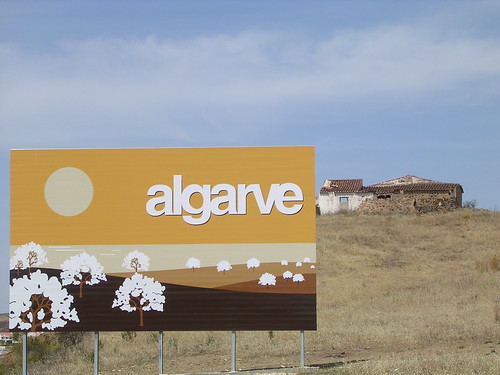
welcome to the Algarve. Photo courtesy of flickr creative commons: flickr.com/photos/segfault/
2. Where to stay. If you’re planning a holiday to the Algarve, you’ll want to ascertain where to stay. Of course, all of this depends on your travel style – from luxury villas to family resorts to backpacker accommodations, the Algarve is packed with options. If you’re traveling with your children or as a retired couple or as a group of college friends, never fear – there is a wide array of choices to suit your needs. You can find seaside villas or resorts, or other, quieter alternatives just a short walk away from the water. Wherever you are staying, you can be sure to find plenty to do, sites to visit, and towns to explore.
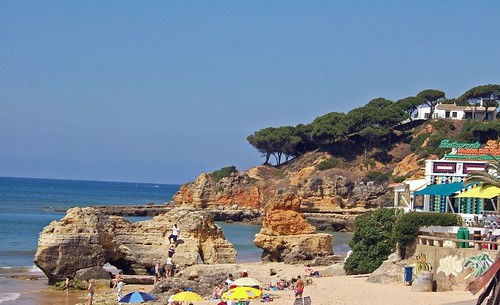
Photo courtesy of flickr creative commons: flickr.com/photos/sue_elias/
3. What to do. Well, besides the beaches! If you can bear to pull yourself away from relaxing in the sun and playing in the water, there is a plethora of things to do: sailing, golfing, shopping (see #8), SCUBA diving, flying, exploring nature, hiking (over 30 trails available for hiking), surfing, horseback riding, take a ‘safari’ in Albufeira, abseiling in the Monchiques, walking, bicycling, jetskiing, boating, canoeing, kayaking, windsurfing, and fishing. Of course, this is just the tip of the iceberg, isn’t it? You know what I mean – you head somewhere, and discover a new passion (whether it is a new golf course, a new sport, or that perfect shop).
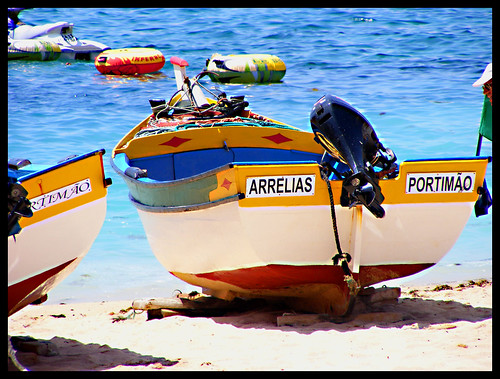
Photo courtesy of flickr creative commons: flickr.com/photos/23868590@N03/
4. What to eat. Speaking of passion, I love food. The Algarve is a fantastic and flavorful place for foodies. And if you love seafood, you’re in for a treat. Restaurants will often offer a wide array of fresh seafood dishes. Where better to eat seafood, than on a coast? There are, of course, restaurants that bring global cuisine to you, if you’re jonesing for Italian or Chinese. At restaurants, you will first have a couvert (fresh bread, cheese, olives, sardine pate, and cooked carrots), and then move on to starters (entradas), which might include soups (although if you want it hot, ask for it to be warmed), and seafood such as clams and prawns. The main course (pratos) will usually include a salad, and might be simply prepared seafood, shining in its deliciousness, chicken (frango), feijoada (a delicious Brazilian stew), or even Bacalhau (traditional dried salt cod). You can also find beef, wild boar, pheasant, and other local game.

Fresh fish, Faro, Portugal. Photo courtesy of flickr creative commons: flickr.com/photos/dielis/
5. What to eat (for dessert). Oh, my. With such amazing sweets - desserts and pastries (called doces) - you might have to swim a few more laps at the beach. Try the caramel flan (with fresh eggs, sugar, and milk), a creamy custard tart (again, with fresh eggs and milk and maybe cinnamon or some lemon peel), an almond tart, local cheeses (including queijo, Portugal’s best-known cheese) and local honey, fresh figs, fresh fruit, mousses, decorated cakes, gelatos, pies, and puddings – you’re in for a treat (well, many).

Portuguese desserts. Photo courtesy of flickr creative commons: flickr.com/photos/andr3/
6. What to drink. You’ve got choices, and they aren’t expensive! Try the wine (especially the Algarve wine), called Vinho. Or, the local beer (cerveja) – there are three national brands to choose from: Sagres, Super Bock, and Cristal. You might consider trying different kinds of spirits, including the eponymous and popular Port (which is made from a blend of wines), and two fiery local products: Aguardente (brandy) and Medrono (often called fire water), made from a local fruit.
7. Yes, children love the Algarve. Children are made to feel very welcome here, and there’s plenty to do - from waterparks to the Lagos Zoo; from Zoomarine to Silves Castle to waterfalls; from dolphin watching to sailing on a pirate ship to the environmental education center at Ria Formosa Natural Park. That is, if you can (again) tear yourself away from the beach, where time seems to fly on its own schedule.
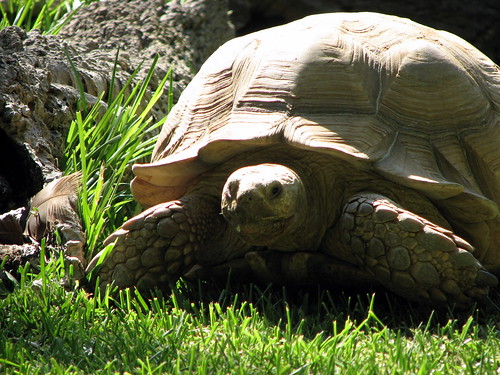
Tortoise, Lagos Zoo, the Algarve. Photo courtesy of flickr creative commons: flickr.com/photos/glenbowman/
8. Shopping. How could I leave this out? The Algarve is known for many beautiful handicrafts, including palm leaves in many hats, baskets, and mats; local canes in picnic baskets; woven textiles; pottery and ceramics, and more. There are also, of course, malls, grocery stores, and (my favorite) markets, which are often held on weekends. Please remember that many small shops will close from 1-3pm each day.
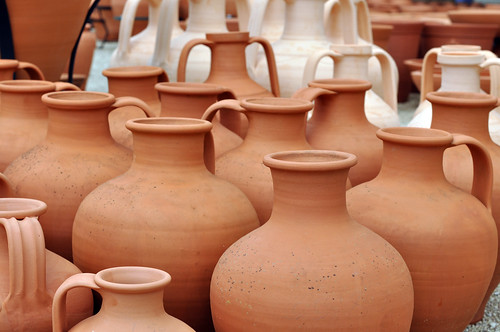
Shopping in the Algarve - traditional pots. Photo courtesy of flickr creative commons: flickr.com/photos/joaoa/
